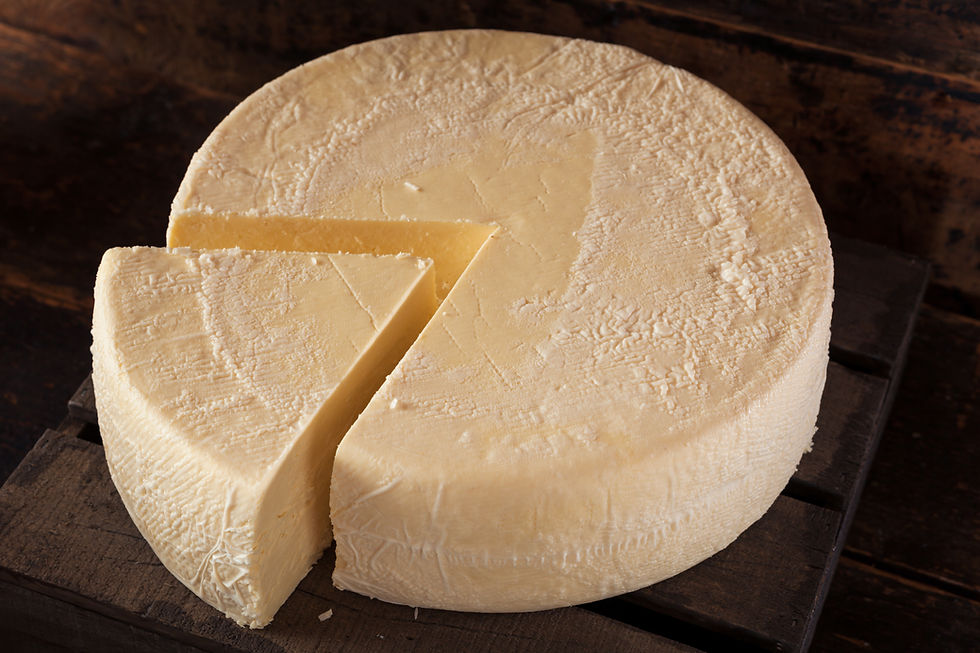Glycolysis: Biochemistry of Holistic Health
- Sylvia Rose

- Dec 30, 2024
- 5 min read
Glycolysis is a biochemical pathway used by organisms to convert glucose into functional energy. This process happens in single-celled bacteria to complex plants and animals. Unnoticed, it works industrially behind the scenes and is crucial to existence.

Glycolysis converts glucose (C6H12O6) into energy. The process happens in the cytoplasm of cells. It's a central component of both aerobic and anaerobic respiration. The glycolytic process produces pyruvate, a beneficial metabolic acid.
Most human cells undergo glycolysis. Muscle cells rely on it during intense exercise when oxygen levels decrease. Glycolysis is essentially the starting point for both aerobic respiration and fermentation in nature. A holistic process, it can take many forms but its goal is energy.
Pyruvate or pyruvic acid produces energy in the form of adenosine triphosphate (ATP). A series of ten reactions occurs in the cytoplasm of cells to make ATP universally accessible.

Organisms Using Glycolysis
Glycolysis is a metabolic pathway found in all living organisms, from the simplest bacteria to complex multicellular organisms like plants and animals. It's essential for life, health and holistic harmony.
Prokaryotes: Many prokaryotic organisms, such as bacteria and archaea, use glycolysis as their primary means of generating ATP. Glycolysis helps extract energy from glucose and other sugars.
Eukaryotes: In eukaryotic organisms, glycolysis occurs in the cytoplasm and is the first step in both aerobic respiration and anaerobic fermentation. Yeast, for example, can perform glycolysis to receive energy, followed by fermentation to produce ethanol under anaerobic conditions as in brewing and baking.
Plants: While plants are primarily known for photosynthesis, they also undergo glycolysis to meet their energy needs, especially during the night when photosynthesis is not an option.

Glycolysis in Nature
Glycolysis is an intersection of various metabolic pathways. It allows organisms to extract energy from glucose, a common carbohydrate found in nature. The process provides not only ATP but also precursors for other metabolic pathways.
The process is the same for both plants and animals, but they use the end products in different ways. In nature and health, glycolysis is instrumental in:
Fermentation
In the absence of oxygen, many organisms rely on glycolysis followed by fermentation to produce energy. In anaerobic habitats like deep waters, the human GI or muddy soils, glycolysis supplies needed energy.

Some microbes in wetlands produce energy only by glycolysis, such as various Pseudomonadota spp. The group is previously named the 'Proteobacteria' after the Greek god Proteus, who is known to assume many forms.
Food Production
The ability of yeast to perform glycolysis and subsequent fermentation is used in production of alcoholic beverages and bread, influencing human culture and nutrition.
Organisms such as yogurt bacteria (lactic acid bacteria or LAB) convert the pyruvate from glycolysis into lactic acid, enabling them to generate energy even when oxygen is scarce. This process is the key to creating tangy flavor in fermented dairy products.

Cellular Metabolism
Glycolysis generates intermediates vital for the synthesis of nucleotides, amino acids, and lipids, a central function in cellular metabolism.
Plant Metabolism
Glycolysis is essential to plants. It provides components for creating amino acids, nucleotides and fatty acids, contributing to overall plant health and growth.

Advantages of Glycolysis
Rapid ATP Production
Glycolysis allows swift ATP production, providing immediate energy for cellular activities, especially in anaerobic conditions where oxygen is limited, such as in the muscle tissue. Athletes are familiar with this process in the human body.
Glycolysis yields ATP faster than many other pathways. It can generate the infusion of energy in about 10 seconds during high-intensity activities like dance, workout or sports.

Versatility
Glycolysis can process various substrates beyond glucose, including fructose, sucrose and galactose, giving organisms a choice selection of different carbohydrates for energy.
Minimal Oxygen Requirement
Glycolysis can occur in both aerobic and anaerobic conditions, making it a flexible pathway suitable for various environments. Bacteria such as some Bacillus spp. living in anaerobic environments can survive solely on glycolysis.
.
Precursor Production
The pathway produces intermediates, which are precursors for biosynthetic pathways, for optimal cell growth and maintenance. Products of glycolysis, especially pyruvate, can enter several metabolic pathways, including the citric acid cycle for further ATP production.

Glycolysis Process: From Glucose to Pyruvate
The glycolytic pathway consists of ten enzyme-catalyzed steps, resulting in the conversion of glucose into two molecules of pyruvate.
Energy Investment Phase
Hexokinase Reaction: The process starts with hexokinase catalyzing the phosphorylation of glucose, leading to glucose-6-phosphate (G6P) formation. This step consumes one ATP.
Isomerization: G6P is transformed into fructose-6-phosphate (F6P) through the action of phosphoglucose isomerase.
Phosphorylation: Another ATP is used by phosphofructokinase-1 (PFK-1) to convert F6P into fructose-1,6-bisphosphate (F1,6BP). This step acts as a key regulatory checkpoint in glycolysis.
Cleavage: The aldolase enzyme cleaves F1,6BP into two three-carbon molecules: dihydroxyacetone phosphate (DHAP) and glyceraldehyde-3-phosphate (G3P).
Isomerization Again: DHAP is converted to G3P by triose phosphate isomerase, resulting in two molecules of G3P.

Energy Payoff Phase
Oxidation and Phosphorylation: Each G3P undergoes oxidation and phosphorylation by glyceraldehyde-3-phosphate dehydrogenase, forming 1,3-bisphosphoglycerate (1,3BPG).
ATP Formation: The enzyme phosphoglycerate kinase converts 1,3BPG to 3-phosphoglycerate (3PG), producing ATP.
Rearrangement: Phosphoglycerate mutase rearranges 3PG to 2-phosphoglycerate (2PG).
Dehydration: Enolase facilitates the dehydration of 2PG to phosphoenolpyruvate (PEP), creating a high-energy substrate.
Final ATP Generation and Pyruvate Formation: Finally, pyruvate kinase catalyzes the transfer of a phosphate from PEP to ADP, yielding one more ATP while producing pyruvate, the endpoint of glycolysis.

Pyruvate (Pyruvatic Acid)
Pyruvic acid can be made from glucose through glycolysis, converted back to carbohydrates (such as glucose) via gluconeogenesis, or converted to fatty acids through a reaction with acetyl-CoA.
It can also be used to construct the amino acid alanine. Pyruvate can be converted into ethanol or lactic acid through fermentation.
Pyruvic acid supplies energy to cells through the citric acid cycle (also known as the Krebs cycle) when oxygen is present (aerobic respiration), and alternatively ferments to produce lactate, the base of lactic acid, when oxygen is lacking.

Non-Fiction Books:
Fiction Books:
READ: Lora Ley Adventures - Germanic Mythology Fiction Series
READ: Reiker For Hire - Victorian Detective Murder Mysteries


